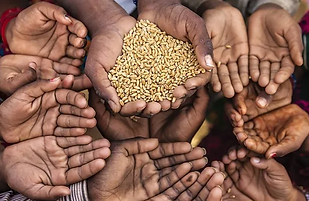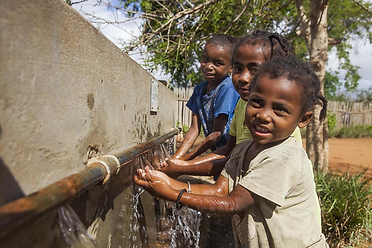The different types of poverty
- Maelie Ciccioli
- Jan 25, 2023
- 3 min read
World hunger
Global hunger or World hunger is not just the state of people being hungry, and does not end when a piece of food is given to them. Hunger is also associated with the distress that comes with the lack of food. It means not having the energy and strength to work and provide food for the family and the lack of food resources forcing people to uproot themselves from home. This is a vicious cycle that a person cannot escape from simply by having food to eat.

The United Nations explains hunger as “a period when populations are experiencing severe food insecurity”. World hunger is when people spend entire days with nothing to eat due to various reasons such as lack of money and lack of access to food, and other resources. When a person consumes below 1,800 calories per day, it is qualified as food deprivation or undernourishment meaning not having enough food.
As a person starts to eat less and less, the effects are as diverse as they are devastating. A diet characterised by not having enough intake of calories, proteins, vitamins and minerals prevent human development at every level, for babies, childrens and adults. This negatively impacts the health, education, economic and social development of entire communities across the globe.
Hygiene and Sanitation
Hygiene poverty is not being able to afford many of the everyday hygiene and personal grooming products most of us take for granted. The reality of low income is that it restricts people's options, leaving us caught between being able to heat our homes, pay the rent, eat and be clean. Those with limited economic resources are less likely to have the funds to purchase these materials, making proper handwashing more difficult. These people are not able to have access to clean water, clean clothes or any hygiene products to stay healthy. They are also less likely to have the funds to purchase face masks or gloves, which are also key in reducing the spread of germs.

Without these materials, individuals must interact with others in a way that increases transmission risk.Those with funds to purchase these items, however, may live in a food desert where there is no local grocery store. For these people to travel may be difficult, further preventing them from acquiring what they need to maintain cleanliness.
Health care
The health of people with low incomes often suffers because they can’t afford housing, food, or child care. Such living conditions, and the stress they cause, can lead to higher rates of tobacco and alcohol use and increase the risk of health problems developing or worsening over time.

Poverty affects health by limiting access to proper nutrition and healthy foods; shelter, safe neighbourhoods to learn, live, and work, clean air and water; utilities; and other elements that define an individual’s standard of living. Individuals who live in low-income or high-poverty neighbourhoods are likely to experience poor health due to a combination of these factors.
Shelter
People become homeless for lots of different reasons. There are social causes of homelessness, such a lack of affordable housing, poverty and unemployment; and life events which push people into homelessness.

People are forced into homelessness when they leave prison, care or the army with no home to go to. This is a problem as homeless people normally then tend to sleep on couches, in garages, sheds, and backyard tents. This then obviously leads to not being sanitary and then becoming sick which is a problem.
.png)




Comments